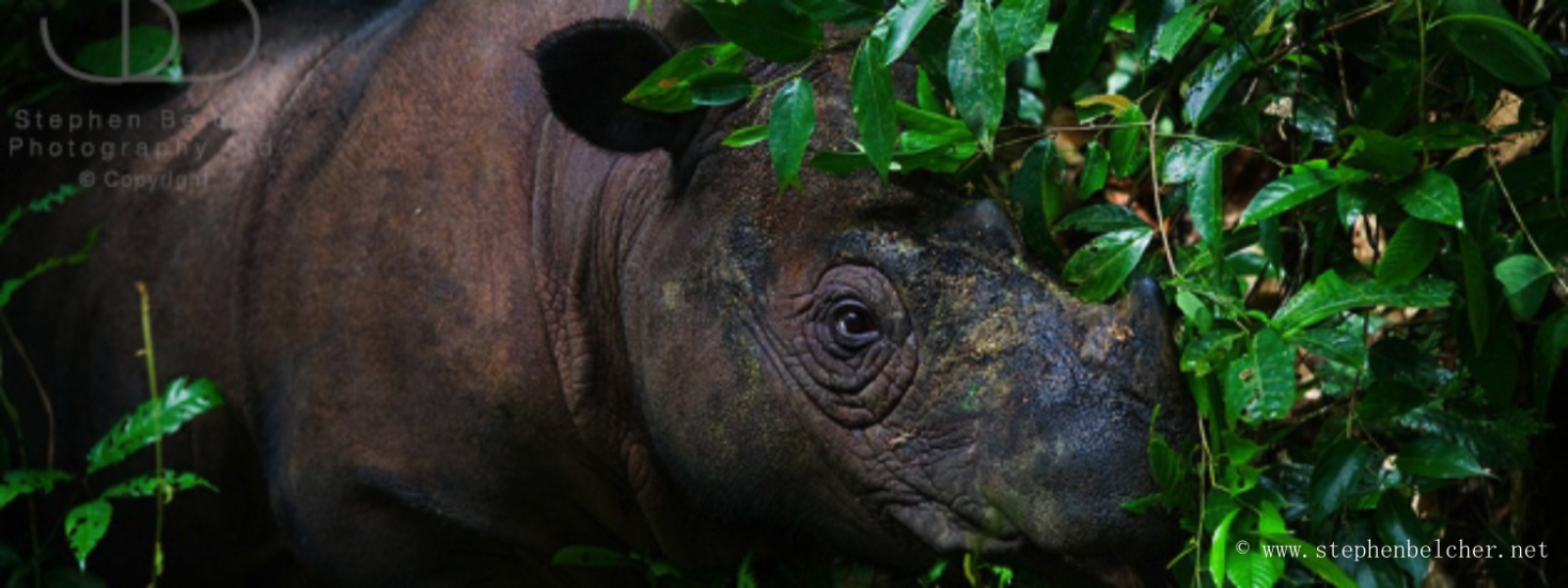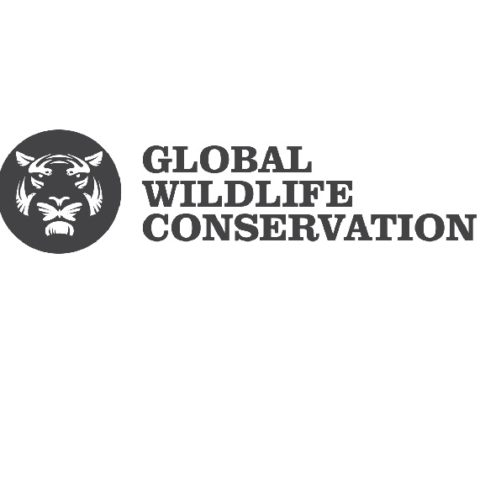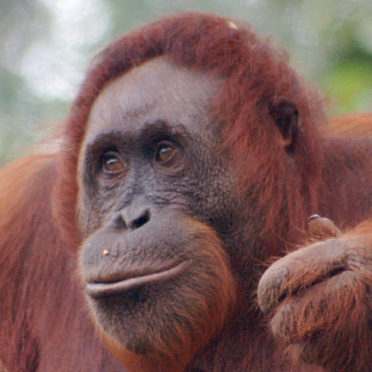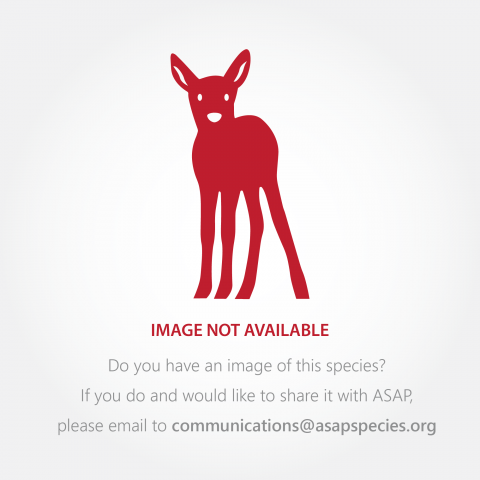Conservation Actions
The species has been included on CITES Appendix I since 1975, and legally protected in all range states. Rhino Protection Units (RPUs) have been a force majeur in fighting poaching in Sumatra. Many organizations are involved with these units, which work under a Memorandum of Understanding with the Government of Indonesia's Ministry of Environment and Forestry. The expansion and reinforcement of anti-poaching programs, as well as expanding the current captive breeding program, are the top priorities if this species is to survive.A standardized method for rhino monitoring has been developed and launched (Tim Monitoring Badak Sumatra 2014). However, it has only been partially implemented and in few areas. The low number apparently poses a big challenge in obtaining an adequate sample that will result in reliable population estimates. Meanwhile, there has also been a concern about introducing disturbance if an intensive survey is conducted in sensitive areas. Because of this, to-date no robust population data are available. The current survey is directed to focus on identifying rhino that are considered "doomed" and to be rescued as recommended by the PVA analysis (Miller et al. 2015) and endorsed under the Government of Indonesia's Emergency Action Plan.
There are ongoing efforts to further develop capacity for managed breeding in Indonesia. There have been recent advances in captive breeding techniques for this species, including successful births at the Cincinnati Zoo & Botanical Garden in 2001, 2004, and 2006 and at the Sumatran Rhino Sanctuary in Sumatra in 2012 and 2016. All the animals from Cincinnati Zoo & Botanical Garden (United States) have now been transferred to the Sumatran Rhino Sanctuary. The size of the facility will be doubled by the end of 2019 so that it can hold more animals. The Government of Indonesia has endorsed further rhino rescues to speed up conservation breeding. In late 2018, a collaborative project led by the Ministry of Environment and Forestry, involving the IUCN SSC, the International Rhino Foundation, WWF, National Geographic, and Global Wildlife Conservation and Yayasan Badak Indonesia, WWF-Indonesia, and Forum Konservasi Leuser in-country, was launched to speed up the conservation breeding of the species by expanding the Way Kambas Sumatran Rhino Sanctuary and to develop new captive breeding centres in Leuser and in Kalimantan.
The Government of Indonesia published its "Strategy and Action Plan for the Conservation of Rhinos in Indonesia" covering the time period of 2007 to 2017. A further conservation strategy for the Indonesian Sumatran rhino populations was developed in a series of workshops in 2014 and 2015. The Government of Indonesia launched an Emergency Action Plan in early 2019.
In Sabah, Malaysia, the Borneo Rhino Alliance focused on collecting oocytes from an older female, in the hopes of creating an embryo using semen from Sumatran Rhino Sanctuary males. To ease collaboration between the countries, the Government of Malaysia has the State of Sabah to act on behalf of the Government of Malaysia. The Governments of Indonesia and Malaysia have, in principle, agreed to this exchange but for various reasons no exchanges have occurred. No successful oocyte collection has occurred with this female to-date.
There is a need for further surveys in Myanmar and in Kalimantan to determine the location of any remaining animals.
Location Information
The Sumatran Rhinoceros once occurred from the foothills of the Himalayas in Bhutan and north-eastern India, through southern China (Yunnan), Myanmar, Thailand, Cambodia, Lao PDR, Viet Nam and the Malay Peninsula, and onto the islands of Sumatra and Borneo in Indonesia (Foose et al. 1997, Grubb 2005). The species' precise historical range is indeterminate, as early accounts failed to distinguish rhinos to specific level, due to partial sympatry with the other two Asian rhino species (Rhinoceros sondaicus and Dicerorhinus sumatrensis).The subspecies Dicerorhinus sumatrensis lasiotis formerly occurred in India, Bhutan, Bangladesh, and Myanmar (Nowak 1999). The subspecies is extinct in the three former countries, but there is a possibility that a tiny remnant population remains in northern Myanmar.
The subspecies Dicerorhinus sumatrensis harrissoni formerly occurred throughout the island of Borneo. The subspecies now is considered extinct in the wild in Sabah (Malaysian Borneo). A handful of individuals may still survive in east Kalimantan (Indonesian Borneo) (Kurniawan, pers. comm.).
Dicerorhinus sumatrensis sumatrensis formerly occurred in Thailand, Peninsular Malaysia, and Sumatra (Indonesia). Presently, the subspecies primarily occurs in three protected areas in Sumatra (Miller et al. 2015); there may be a handful of stragglers living outside protected areas, particularly in Aceh Province. The continued existence of a rhino population in Bukit Barisan Selatan National Park is in question due to unprecedented disturbance and illegal activities in the park.
The species occurs from sea level and up to 2,500 m asl.
Geographic Range
Extant
Indonesia
Population Information
The total population now is estimated to be fewer than 80 individuals. Until the early 1990s the numbers continued to decline at a rapid rate with estimated losses of 50% or more of the population per decade (Foose and van Strien 1997). The total population of the Sumatran Rhino has declined by at least 80 percent in the last 30 years. The combination of the extent and rate of population reduction, as well as population fragmentation, makes it perhaps the most threatened large mammal on Earth.The subspecies Dicerorhinus sumatrensis sumatrensis now occurs only on Sumatra, where there are fewer than 80 individuals in roughly ten subpopulations (Miller et al. 2015). The largest populations remain in Bukit Barisan Selatan, Way Kambas, and Gunung Leuser National Park (Miller et al. 2015). The population estimate is still in question in Bukit Barisan Selatan, with no estimate larger than 10 individuals at most and no signs of calves in the past four years. There are thought to be 15-25 rhinos in Way Kambas, the only population considered to be slowly growing, with four calves observed in 2014. In Aceh, there are five subpopulations, ranging in estimated size from two to 24, for a possible maximum total of 30-40 individuals. Miller et al. (2015) report that there may be three small subpopulations in Leuser Barat, but this has not been confirmed. At least four of the five subpopulations in the north of Sumatra are considered non-viable, containing only between two and five animals (Miller et al. 2015). Despite protection, populations continue to decrease. Anti-poaching teams are in place in Bukit Barisan Selatan and Way Kambas National Parks, and in parts of Gunung Leuser.
A tiny population (perhaps no more than three animals) was discovered in east Kalimantan in 2012. Surveys are currently underway to determine the individuals and locations. In 2016, a female with a snare wound was successfully rescued, but subsequently died. In 2018, another capture operation for one animal began in April; a female was captured in November 2018. At the time of this assessment she is in relatively good condition.
The population status of the subspecies Dicerorhinus sumatrensis lasiotis is unknown, with the very slight possibility that a small number of individuals survive in Myanmar.
There are nine animals in captivity, eight in Indonesia and one in Sabah, Malaysia. Two calves were born at the Sumatran Rhino Sanctuary in Way Kambas National Park in 2012 and 2016. The remaining female at the Borneo Rhino Alliance Sanctuary in Tabin Wildlife Reserve, Sabah, Malaysia is non-reproductive.
Threats
The three principal threats across Sumatra are small population effects (e.g., the Allee effect), human disturbance, and poaching. The species is now so reduced that there are very small numbers in each locality where it still survives. Threats in the three populations are slightly different (Miller et al. 2015). In Way Kambas National Park, threats are poaching, disturbance from bird collection, illegal fishing, agar wood collection, human disturbance, annual and catastrophic drought, annual and catastrophic forest fires. In Bukit Barisan Selatan, primary threats are poaching, the Allee effect and resultant inbreeding, human disturbance (e.g., natural resource collection activities such as non-timber forest products, illegal bird collection, pangolin poaching, and illegal fishing), road development, small and large scale encroachment, and catastrophic events. In Aceh Province, threats include poaching, the Allee effect and resultant inbreeding, catastrophic events, El Nino Southern Oscillation events, human disturbance and encroachment, forest conversion into various commodities and plantations, and road development. In Gunung Leuser National Park, the primary threats are poaching, the potential for stochastic catastrophes, human encroachment and disturbance, forest conversion, and road construction.Poaching looms as a threat but at this time is opportunistic and that organized criminal networks are not in operation at the scale they are in Africa. Poaching is primarily driven by the demand in Viet Nam and China for the supposedly medicinal properties of rhino horns and other body parts, and as a high-value gift item. Many centuries of over-hunting as well as habitat loss has reduced this species to a tiny percentage of its former population and range.
Partners
IUCN Red List Account Link
Please click here to see the species' IUCN Red List Account page.Photo Credits
Dedi Candra (category image)
Stephen Belcher/www.stephenbelcher.net (featured image)








